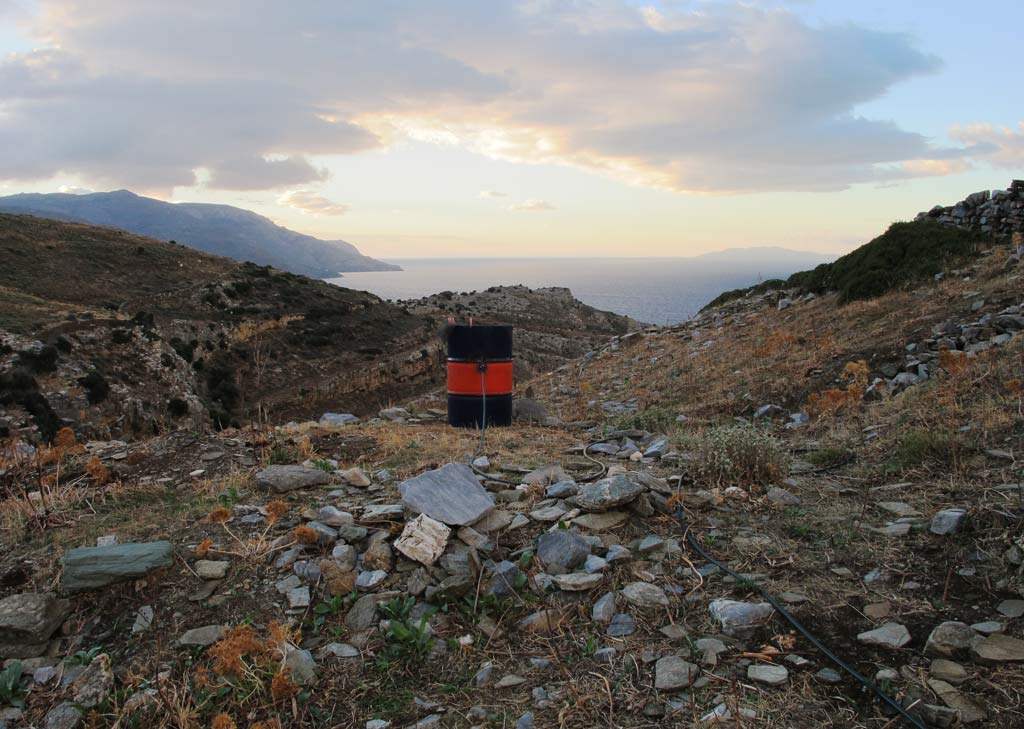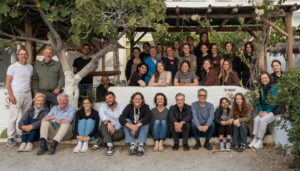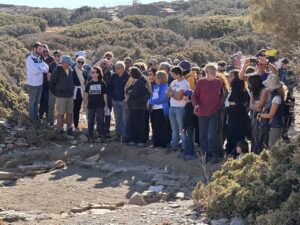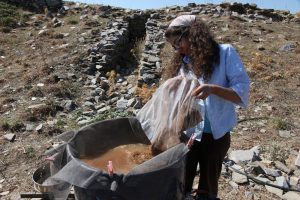
Powerhouse Museum Web Producer
For the first time at Zagora in 2013, soil samples were collected and processed through flotation in order to recover organic remains to find the charred, small, light material which floats to the surface of the water. This process had not been developed 40 years ago when the excavations of the 1960s and 70s took place at Zagora.
Organic plant material such as wood and plants decomposes over time, so such material from the period of the Zagora settlement no longer exists. If it has been burnt and transformed into charcoal, it can survive thousands of years which makes it extremely valuable in providing information about the kinds of plants which occurred at particular locations at different times.
The existence or absence of organic material such as tiny fish bones, shell fragments, seeds and charcoal in occupation deposits can provide evidence of ancient diet and domestic and industrial economy and activities at Zagora. We can also learn about the general environmental conditions in which the Zagoreans lived because organic material can inform us about plants that aren’t exploitable by humans but still throw light on the climatic and other environmental conditions there at that time. Fragments of heavier material such as obsidian, slag and pottery sherds can also be found through this process. If sampling for organic remains had not been undertaken, this information would be permanently lost.
Evidence of what they were cultivating, processing and consuming will provide valuable insights into the agricultural patterns, health and lifestyle of those living at Zagora three thousand years ago. The relative densities of the material across the site will also provide evidence about how different households and areas of the site of Zagora were organised and functioned.
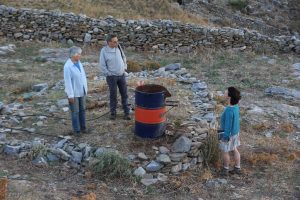
Charcoal can provide a lot of information about the surrounding vegetation, the trees and other plants which were used for building and fuel at Zagora. Under the right preservation conditions, charcoal can even indicate the type of wood that was burned and whether it was slow- or quick-burning wood which provides evidence of what kind of purpose it would have served best – for example, slow-burning wood for food preparation, and fast-burning for industrial purposes, eg, metal work.
Rock crystal appears to be among the sample residues. It will be interesting to find out if the rock crystal is local to Andros or not. If not, it will have been imported, and the type of rock crystal may indicate where it was imported from, which would be an indication of a trade route. If the rock crystal is detritus then that would suggest the rock crystal was worked on site (for example to make jewellery or seals) which is an indication of industrial activity.
Evidence from organic remains can also help us to challenge any assumptions we may have. For example we can’t assume that because they were living next to the sea they were fishing and fish was part of their diet.
Before describing the flotation process, a little background will help to set the scene. The Zagora Archaeology Project (ZAP) Project Directors – Professor Meg Miller, Associate Professor Lesley Beaumont and Dr Stavros Paspalas – wanted in 2013 to expand the kinds of data sought from the project. They had contacted Dr Evi Margaritis, an archaeobotanist (archaeological plant specialist, with expertise in the analysis of plant remains) to determine how best to achieve flotation analysis for the Zagora project and how this could be practically possible in the field. Sampling strategies and the goals of the study were set between the directors of the excavation and Evi.

I’ve come to realise that there are many undocumented challenges in an archaeological project. When the research is written up, we will learn what evidence was found from the flotation process, and what it indicates about life at Zagora.
What won’t be evident is that, after a hard day’s work on site, team members had to drive around the island to source and purchase a 44-gallon metal drum, tap, and all the other items needed for the flotation system. It then had to be constructed and tested at Batsi, and then loaded into a vehicle for transport to Stavropeda – from where team members had to carry all the flotation equipment down the sometimes steep and rocky path to Zagora.
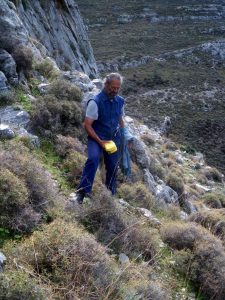
That meant getting a 450-metre long hose attached from the water source to the water drum. I don’t know about you – but I have enough trouble with a 12-metre long hose trying to avoid knots and kinks on those rare occasions I water plants in our garden. So the thought of how to successfully wrangle an almost half a kilometre long hose makes my head hurt.
I remember over a period of days, watching Steve’s efforts in hot and humid conditions to achieve free-flowing water at good pressure to the drum. It required many, many trips up the hill to the water source and back down the hill to the water drum, with a great deal of trial and error, moving the hose and water drum positions to gain the optimum result. Any slight kink in the hose compromised the water pressure. For a conscientious person like Steve, he was also suffering because the time it took to achieve running water for the flotation process was time he was not able to give to the excavation area team of which he was a member. I know if he could have split himself into two so he could work in both places at the same time, he would have done so. Steve’s stamina, tactics, hard physical work and perseverence paid off, and he got the flotation system up and running.
Evi had selected a student whom she had trained in other projects in flotation, Maria-Roza Beshara, to conduct the process at Zagora. Roza (as Maria-Roza asked to be called), a student in the Archaeology and History of Art Department of the National and Kapodistrian University of Athens, who was due to complete her degree in a few months, kindly demonstrated and explained the process to me.
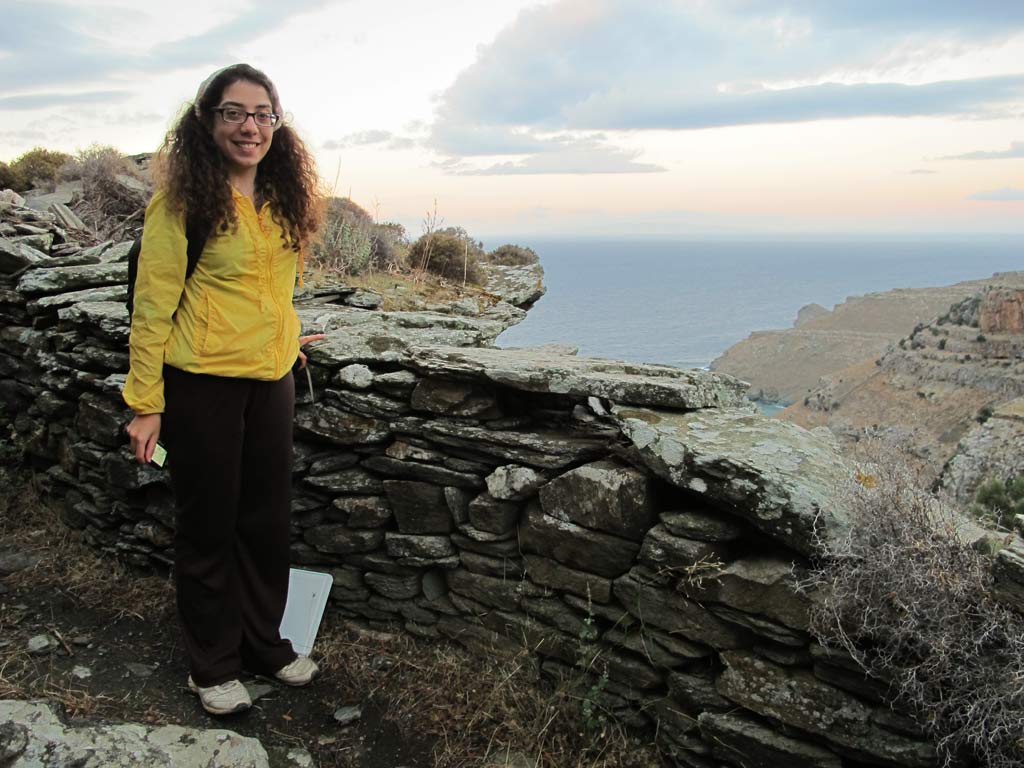
Once excavation of the trenches had reached significant levels (ie, below topsoil and backfilling), samples of soil and other debris were placed into heavy duty plastic bags, labelled with the date and precise location of the sample (both lateral and depth), and carried down to Roza. The average volume of each sample was 12-15 litres.
She placed the material from each bag into the flotation drum the team had constructed. The drum contained water with wire mesh attached across it a few centimetres below the surface of the water.
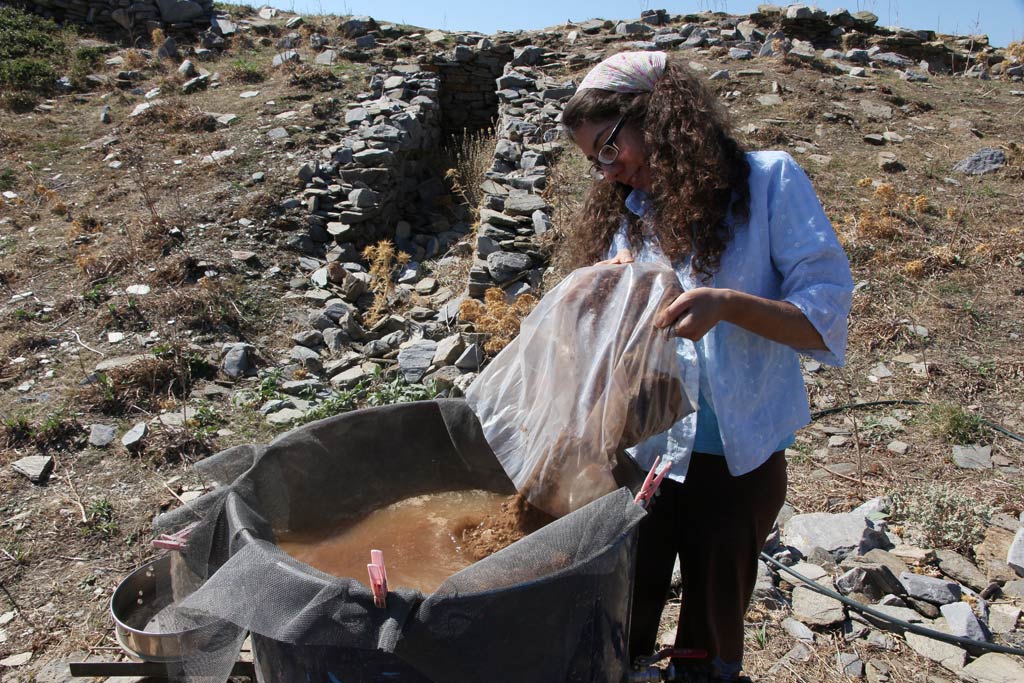
Roza washed the samples by hand in the water, gently loosening the earth away from the other material, and allowing the earth to sink down through the wire mesh into the lower section of the drum. You may like to see the post I published last year about a related process, dry sieving.
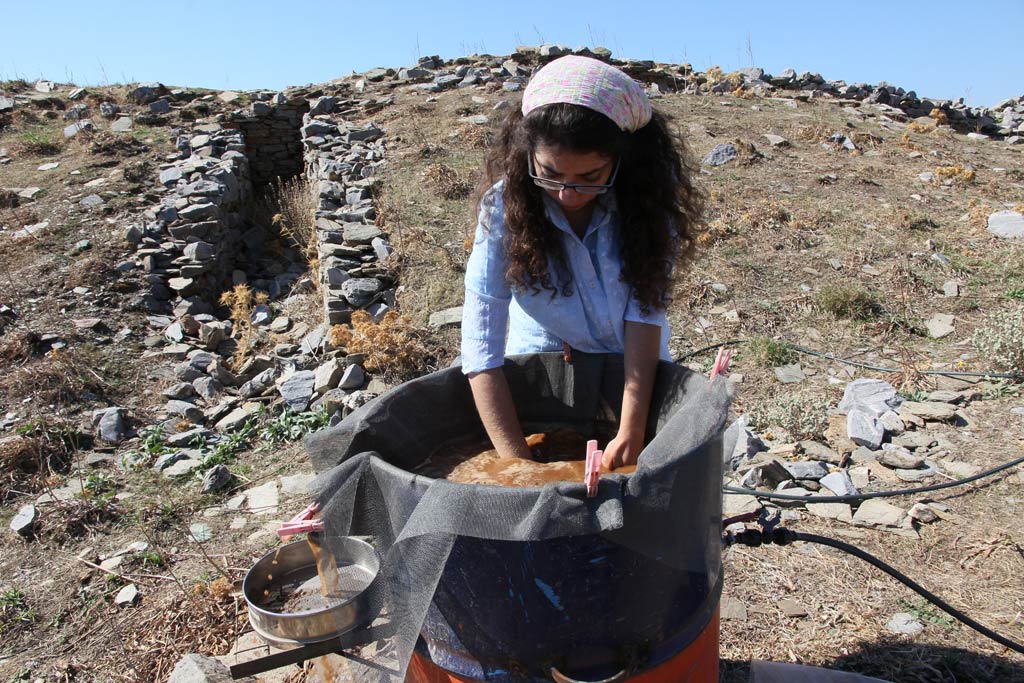
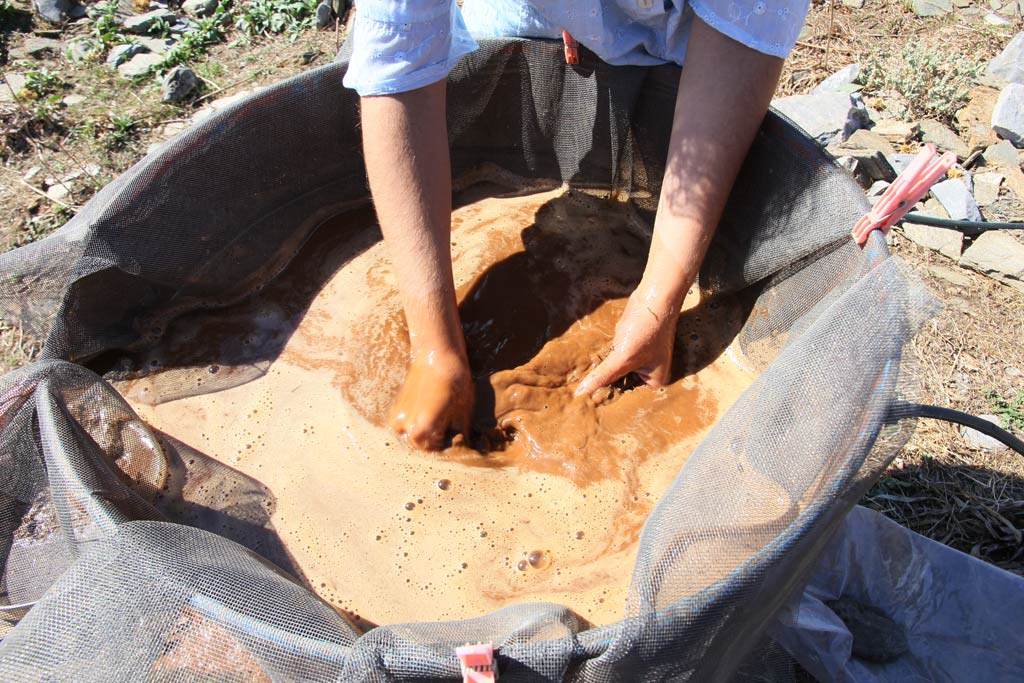
What remains on top of the wire mesh inside the drum is the washed heavier material – stones, sherds, rock crystal, etc. The lighter material – organic plant material, seeds, charcoal, etc., floats to the top of the water, and is swished off by Roza into the round tin at the side of the drum (see closer shot, below).
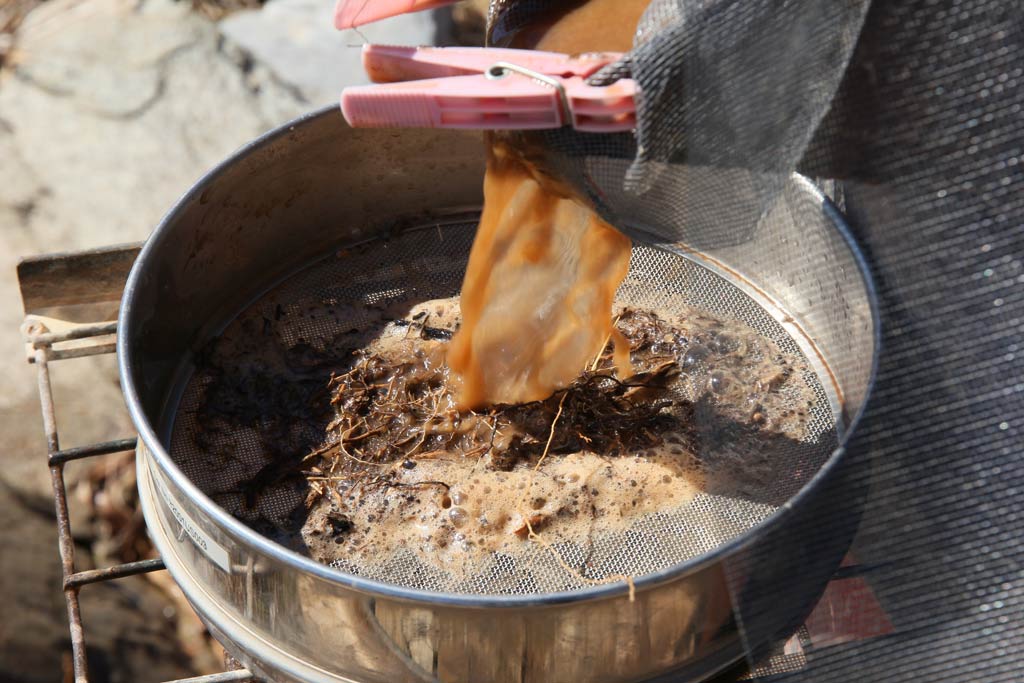
Roza separately collected the lighter and the heavier material, and took it to the courtyard area of the dig hut to be placed on top of square sheets of material so that it could be dried. Each sample is always labelled to identify its source, the date on which it was collected and the volume of the original sample.
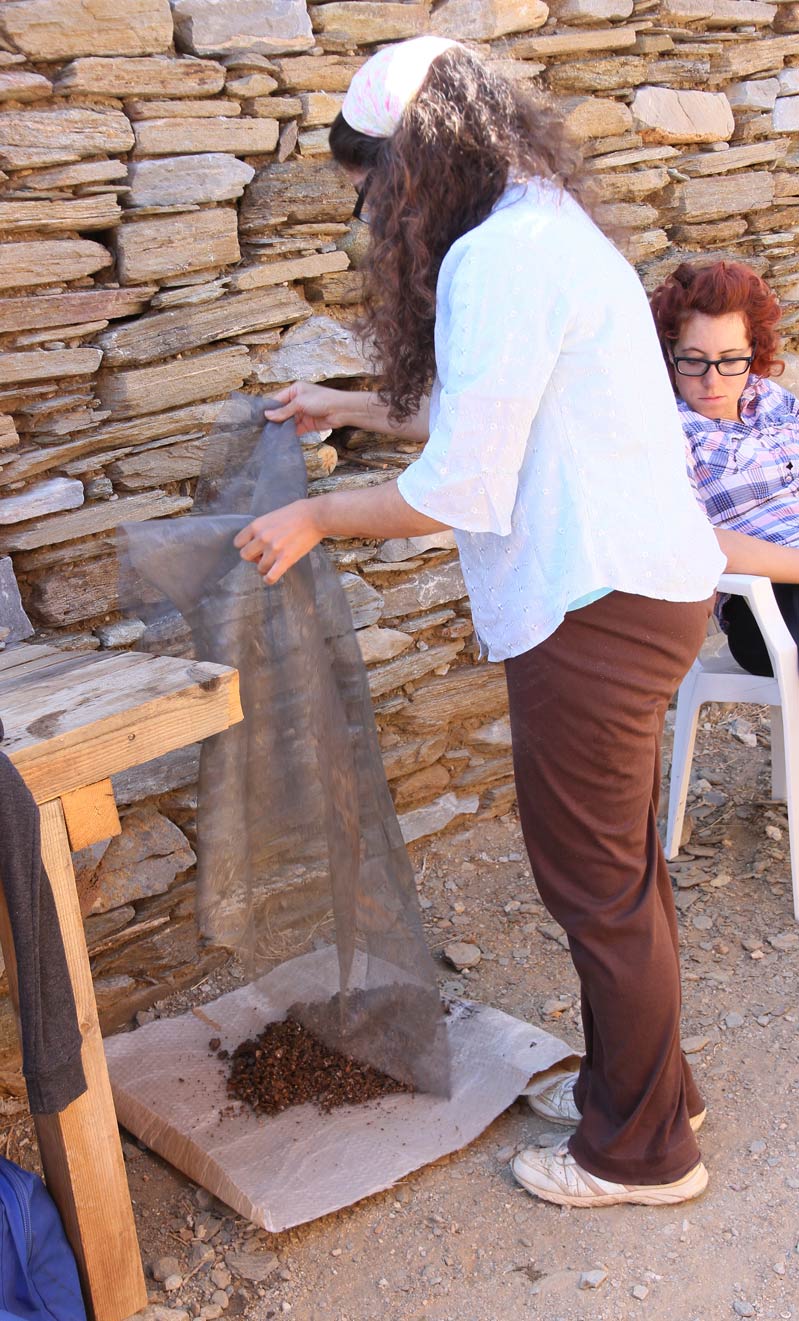
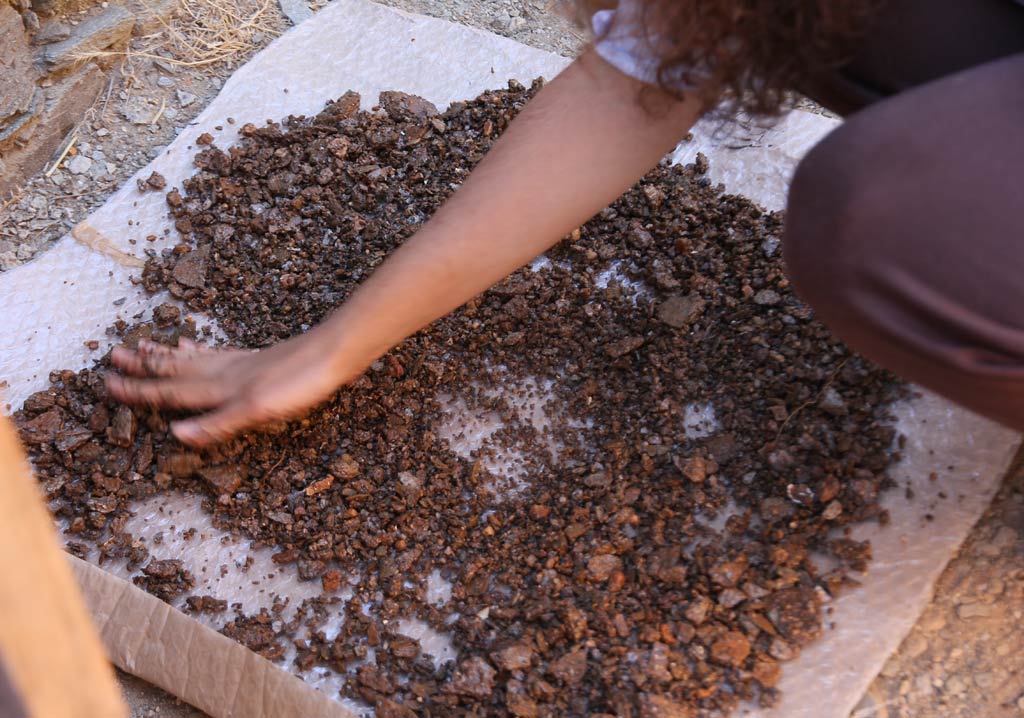
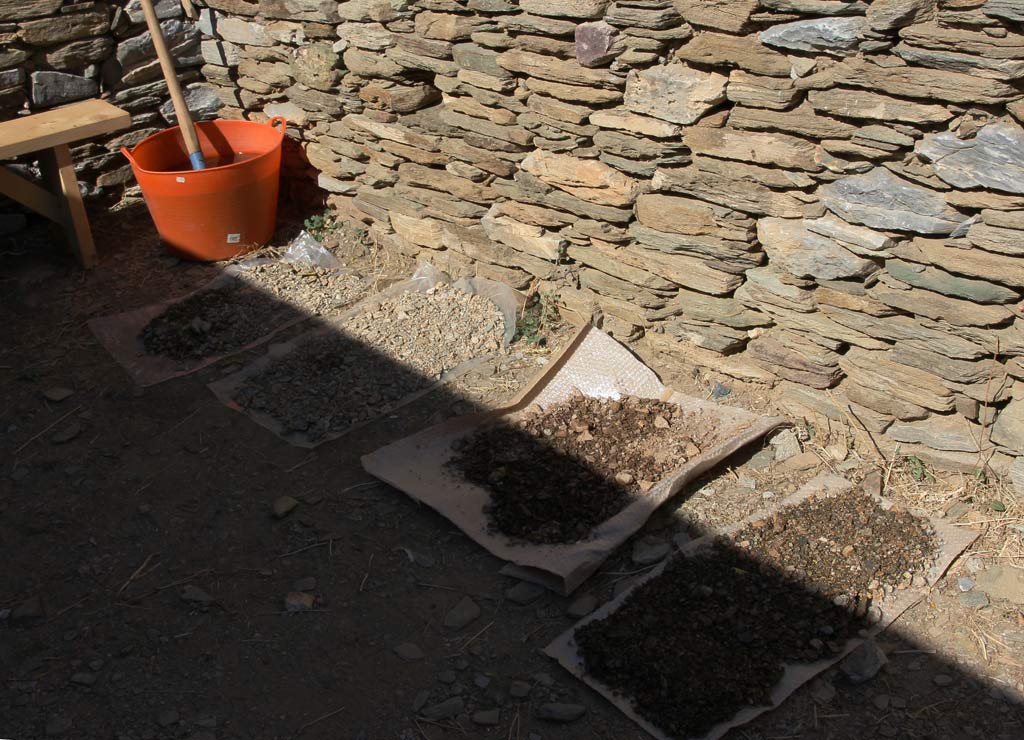
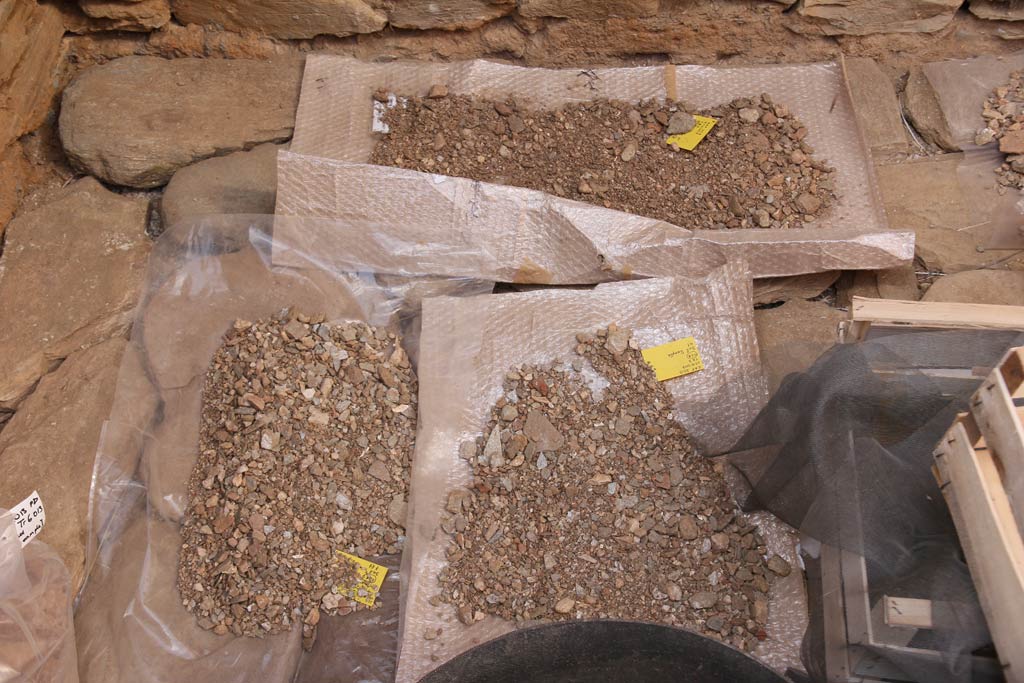
The photos above and below clearly show the difference between the heavier material (above) which was captured in the water tank in the wet sieving part of the process and the lighter material (below) which was scooped off the surface of the water in the flotation part of the process. Roza painstakingly goes through all this debris to look for material which will be taken to the Archaeological Museum at Chora for further analysis.
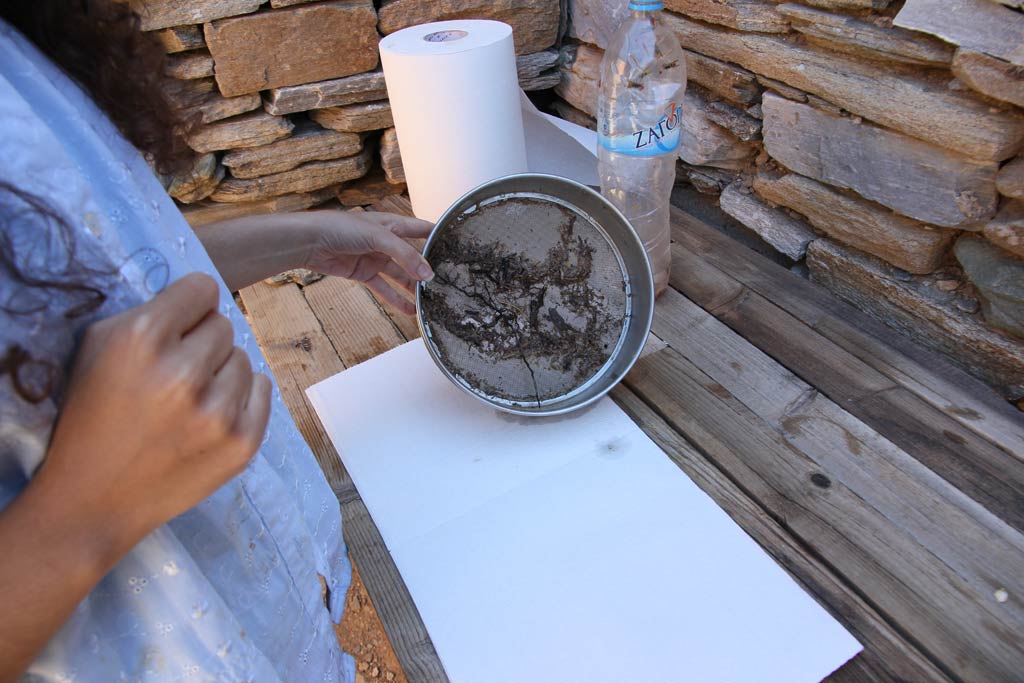
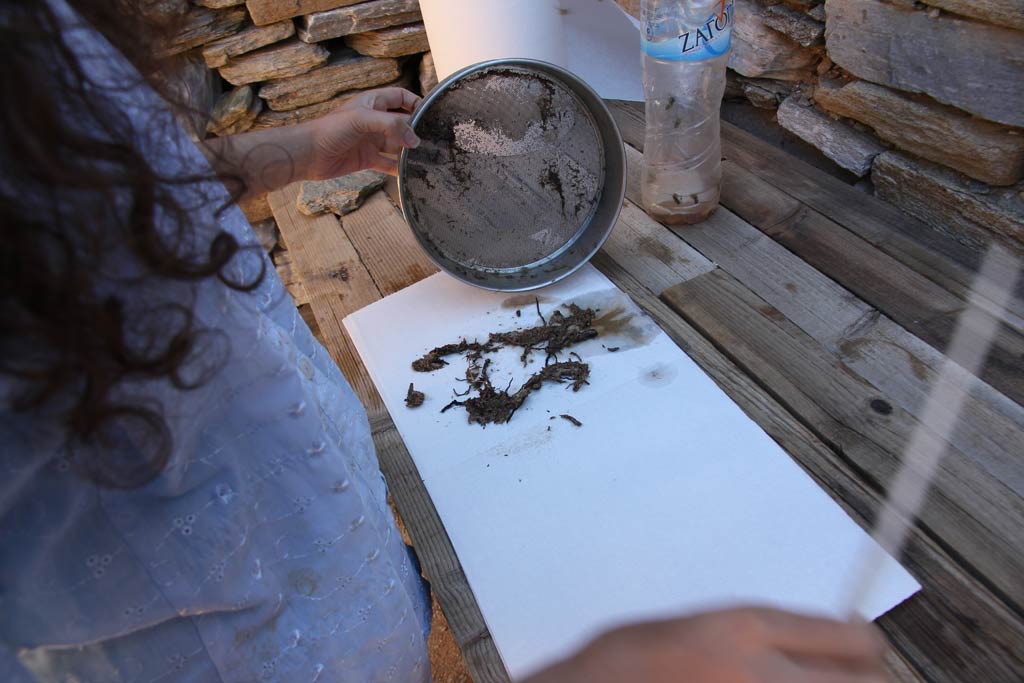

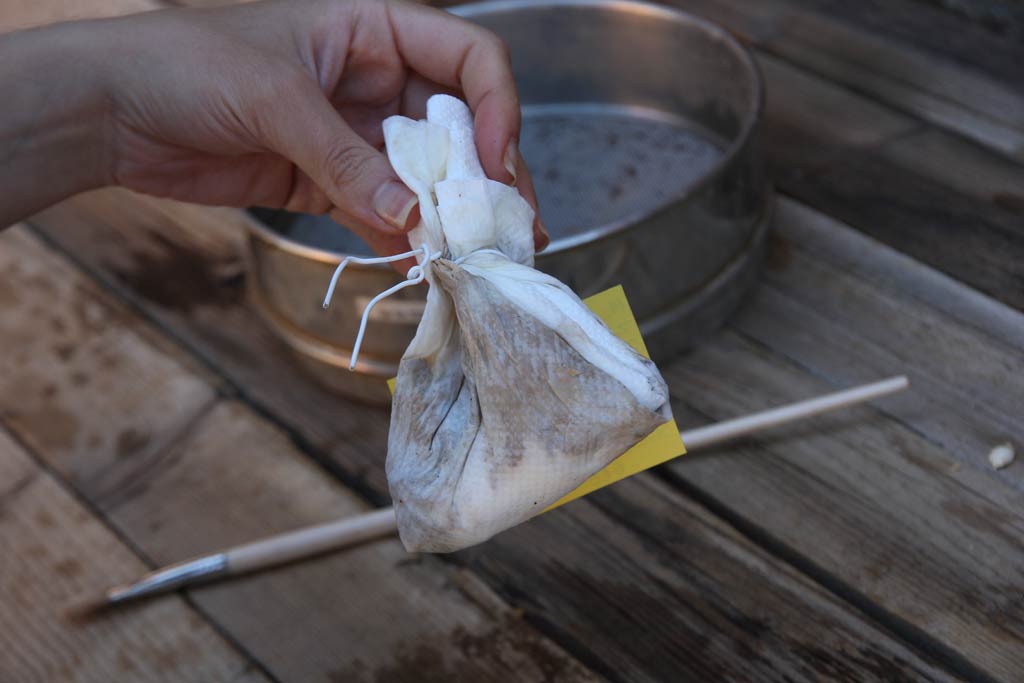
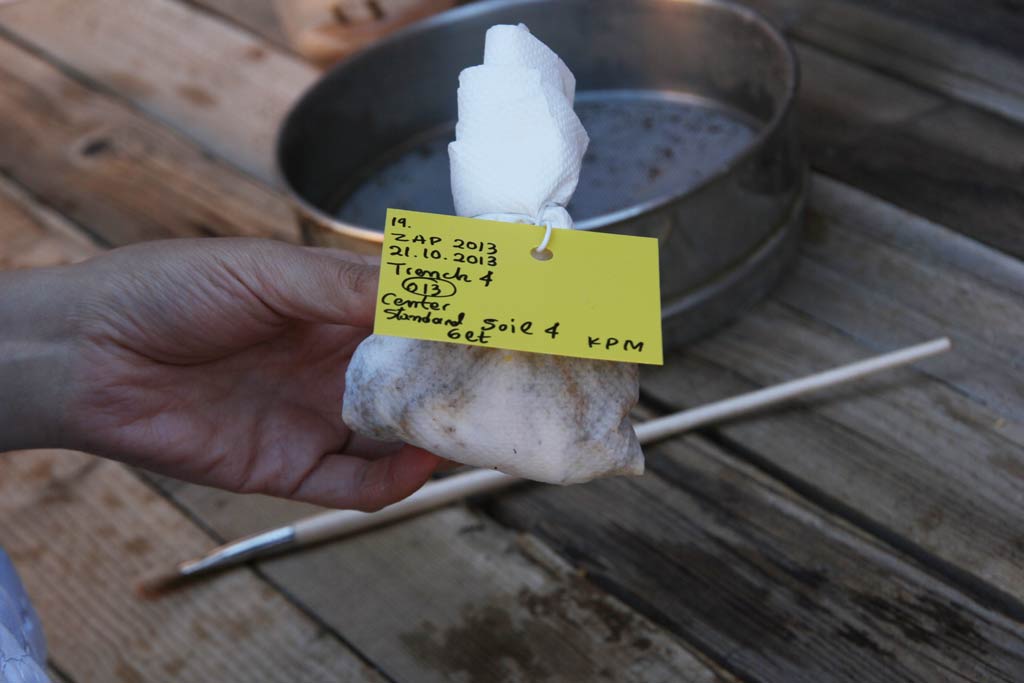
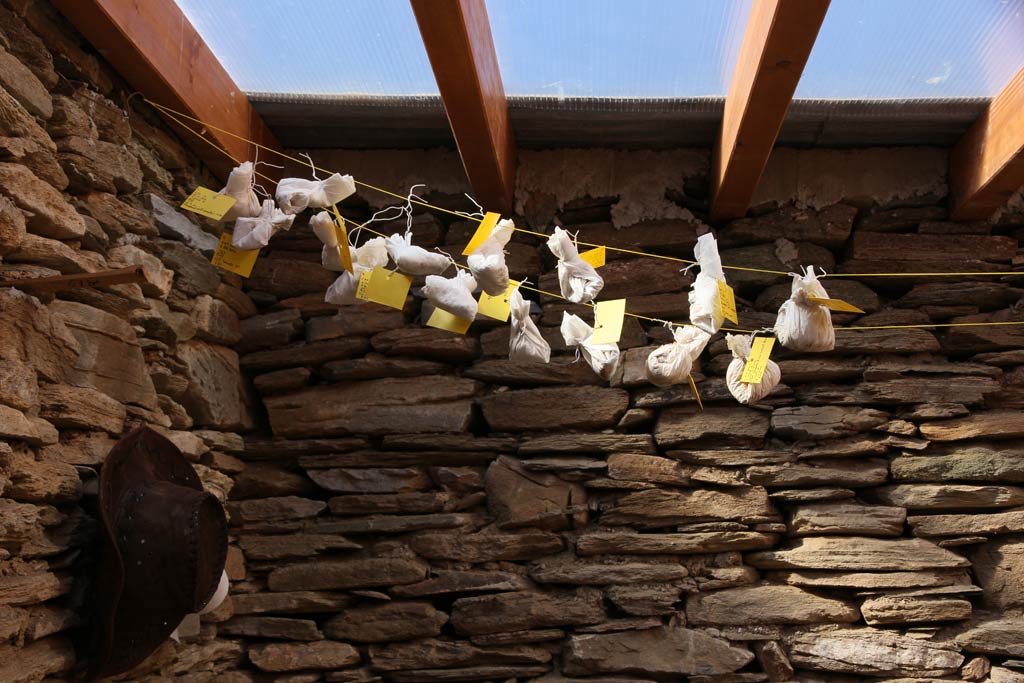

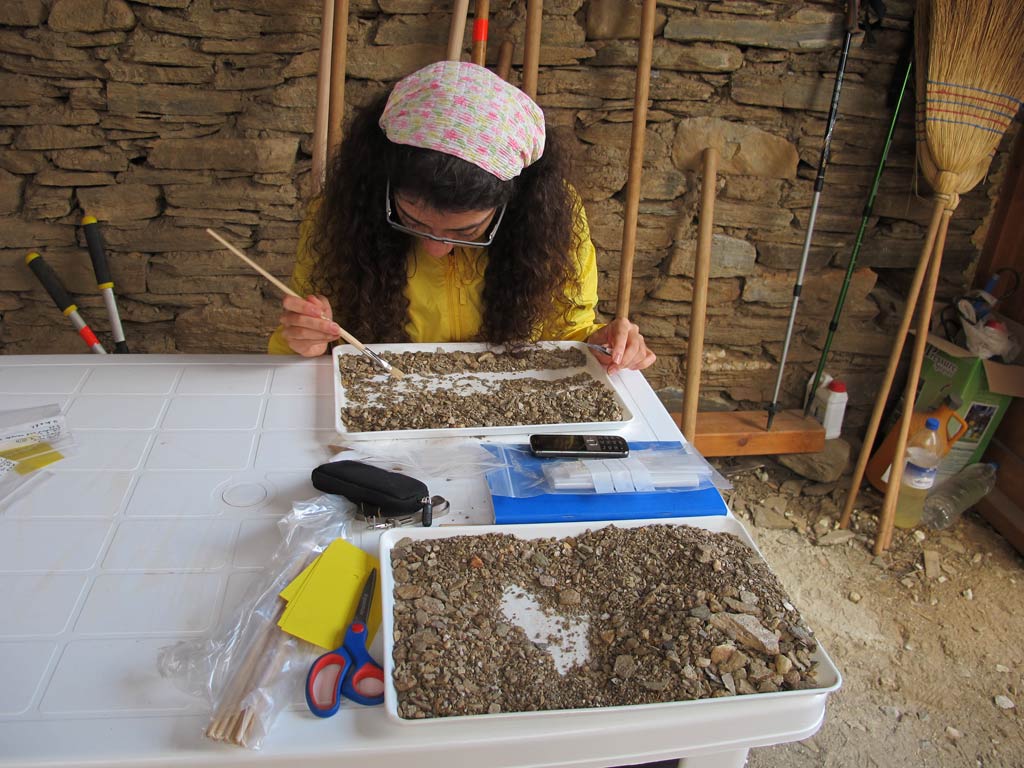
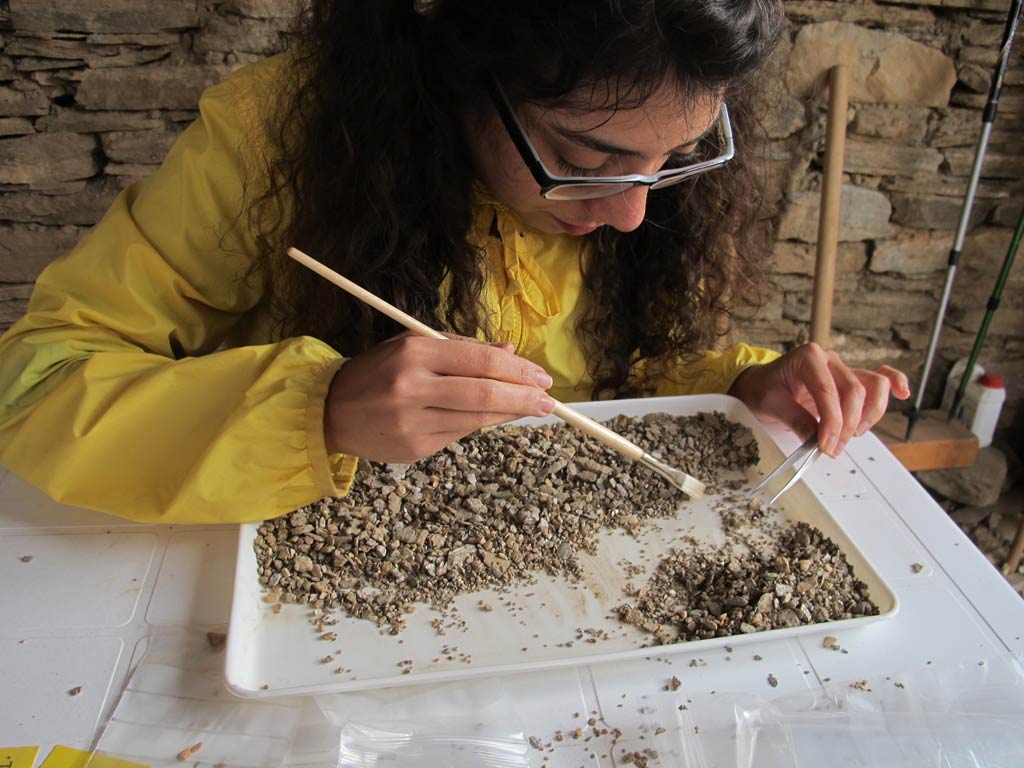
The sorting has to be methodical to be sure not to miss anything of significance. Roza first spreads the material across the tray in a fine layer leaving a little space along the bottom closest to her. She then begins finely brushing the debris gently towards herself, keenly examining every item as she goes.
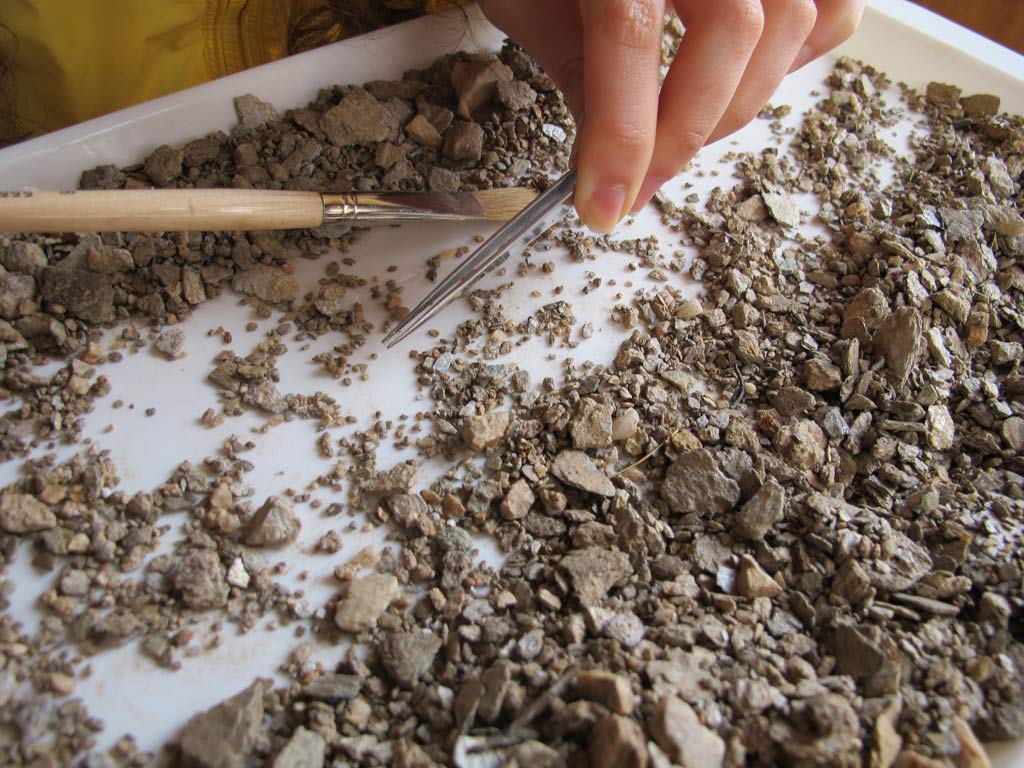
When Roza finds material of significance she picks it up with tweezers and places it in a pile of material of that category on the table (see the two images, below).
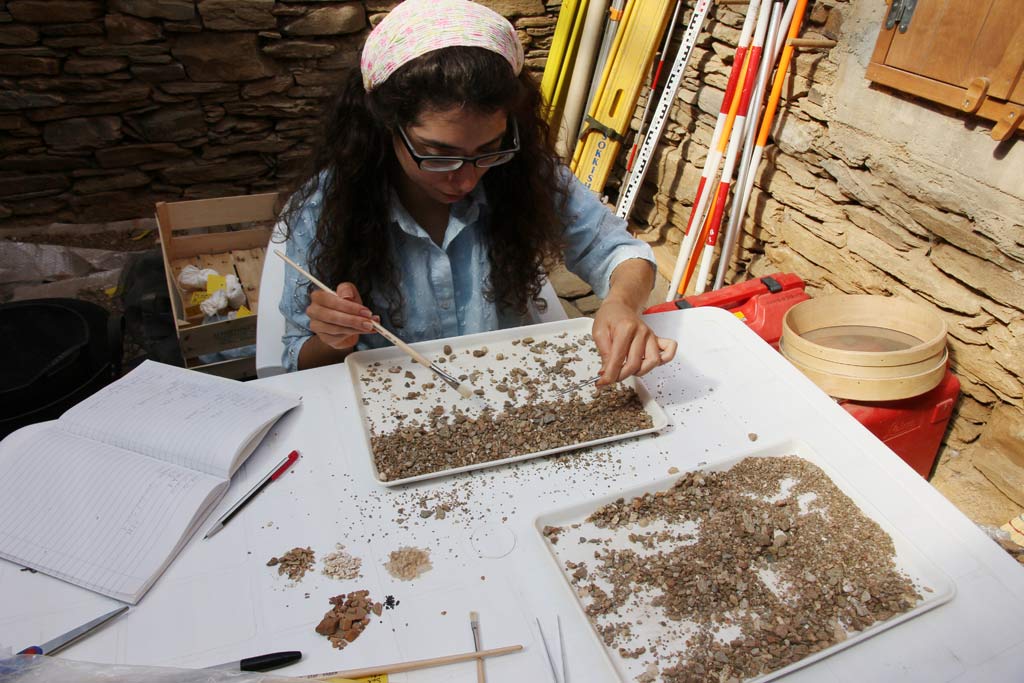
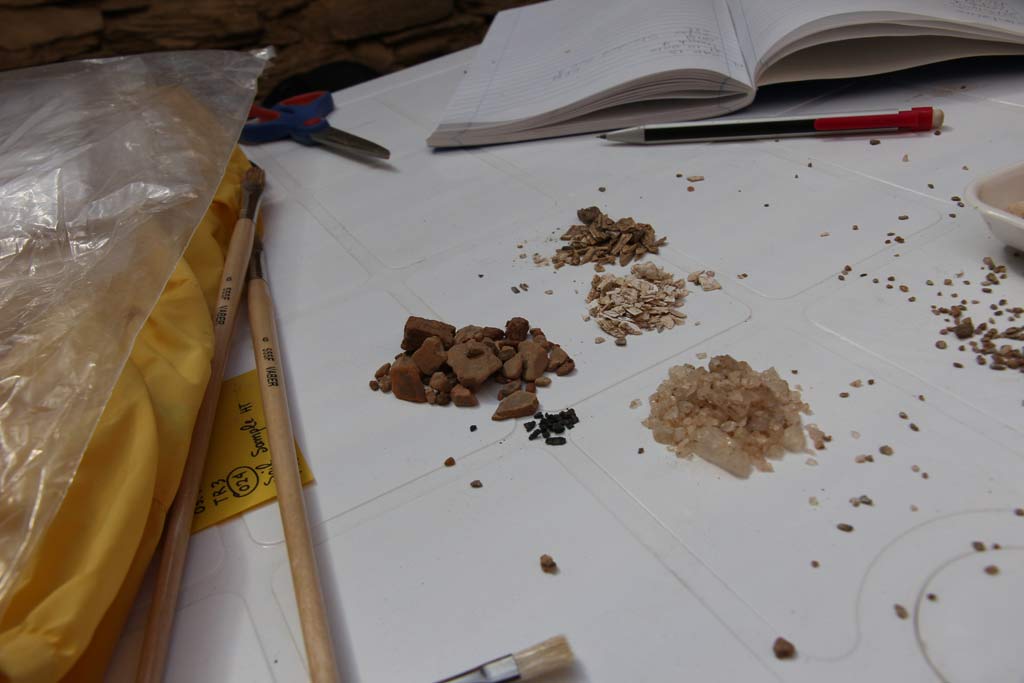
Here is a more complete list of the categories of material Roza collected: seeds, charcoal, pottery, rock crystal, fish bones, obsidian, flint, beads, shell, animal bones, microfauna.
Once these were sorted and counted or estimated, and the bags labelled, they were delivered to the Archaeological Museum at Chora where Evi Margaritis will conduct research on the finds. Evi is responsible for detailed analysis on the seeds but some of the material, such as charcoal and rock crystal, may also be examined by others. Evi will synthesise the findings and write a report for the Zagora project directors about the results of the flotation findings from the Zagora 2013 field season.
